
Who doesn’t love chickadees? They are curious, bold, cute, vivacious, and just generally cheering. They are particularly engaging when hanging upside down to glean from leaves and twigs. Stories are legion about chickadees that will land on a hand to grab a sunflower seed or other tidbit. These pleasing attributes are probably why WC Fields used the phrase ‘my little chickadee’ as a term of endearment, rather than, say, ‘my little Red-winged Blackbird’.
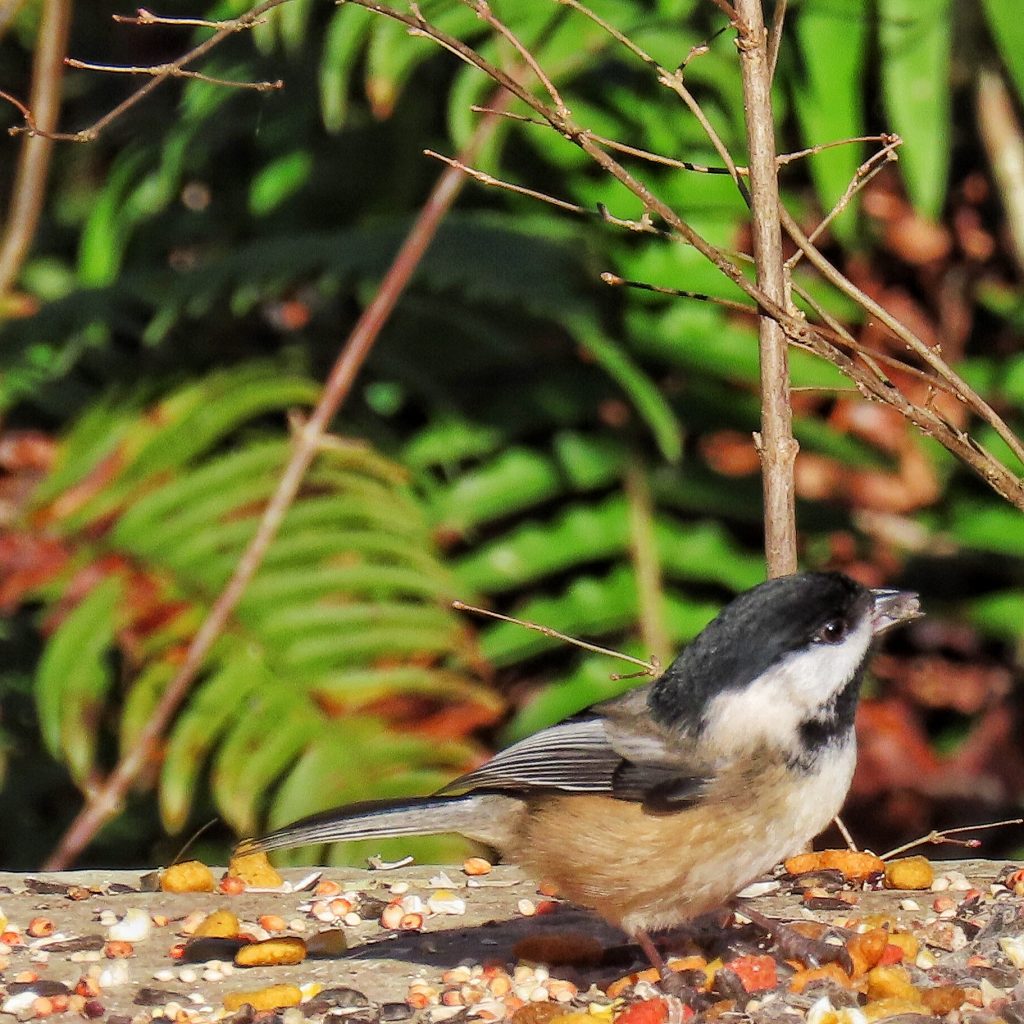
Jane Dobisz (‘The Wisdom of Solitude: A Zen Retreat in the Woods’) wrote that Black-capped Chickadees, some of the only animal life she saw during a hundred day solo meditation retreat in a remote cabin during a Northeast winter, were the only things that kept her, early on in her self imposed exile, from falling deeply into despair. That their fearlessness, hardiness, indomitability, and seeming equanimity in the face of blizzards and subzero temperatures (they can actually lower their body temperature and go into a torpor on very cold nights), while initially somewhat annoying, came to embody for her the very essence of zen.
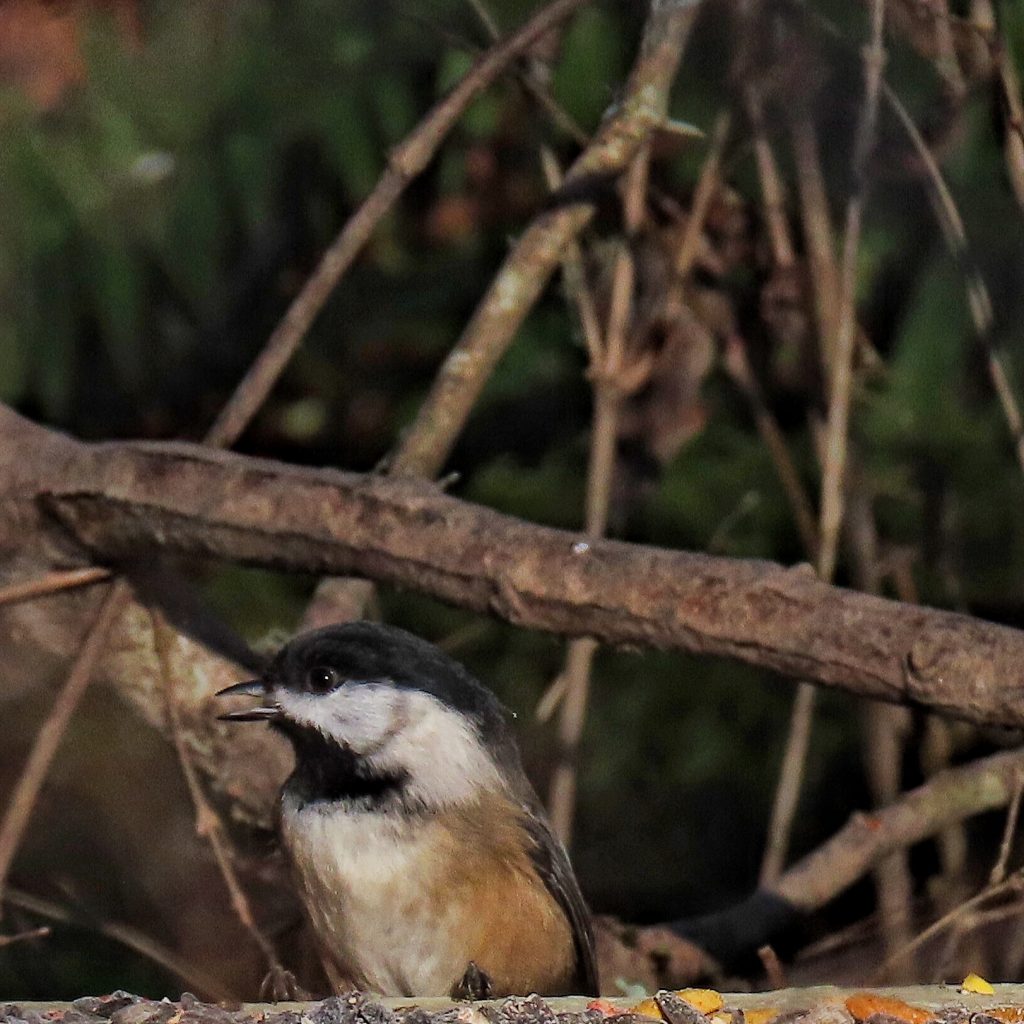
I certainly have seen individual Black-capped Chickadees during my ramblings, and more often at least 2 or 3. But I don’t ever remember seeing a mixed feeding flock of songbirds, regardless of its other constituents, that didn’t contain chickadees, and usually they are the predominant species. One of the reasons for this is that the Black-capped Chickadee’s food vocalization’s are repeated throughout the flock, and other bird species key on them and go to investigate.
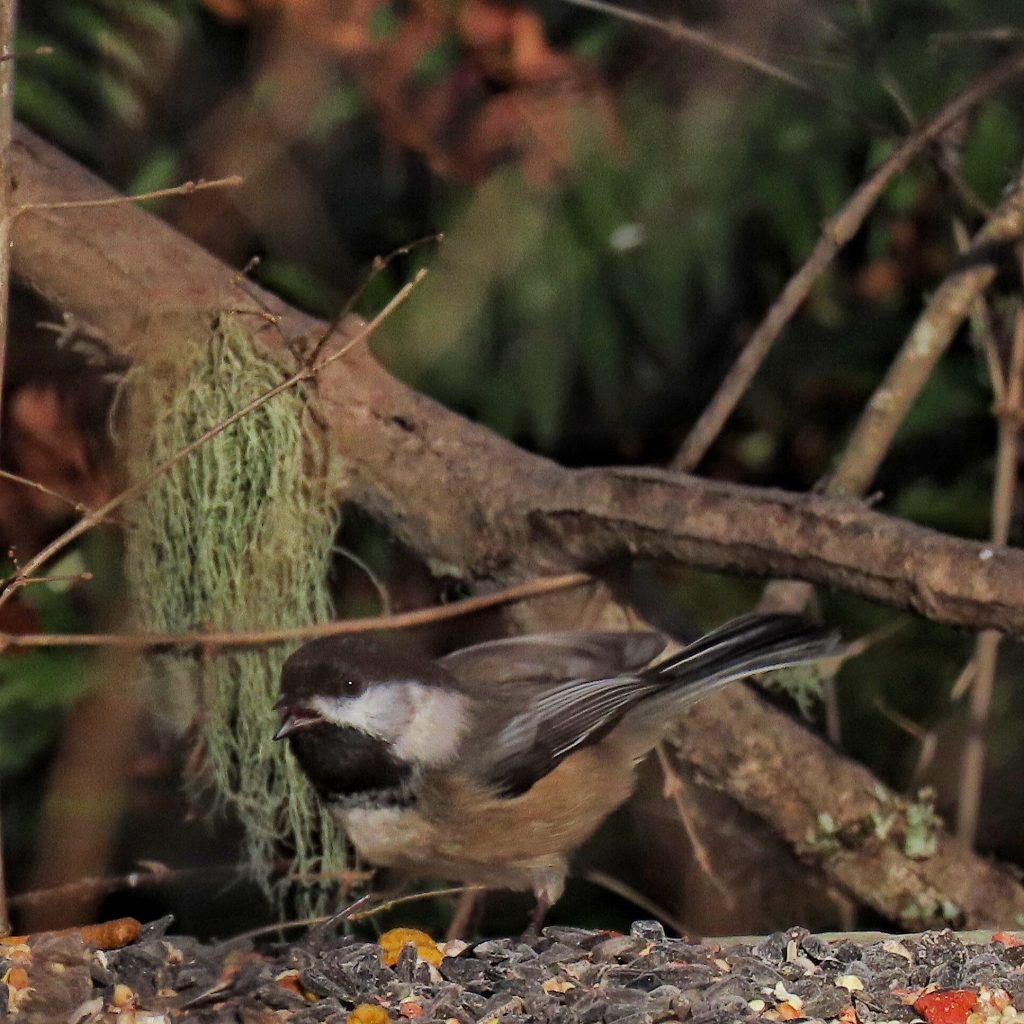
Another chickadee call that brings in other birds is the harassment calls. When a chickadee spies a predator it will sound the alarm, and soon dozens of birds of varying species will mob the interloper, trying to drive it from their location. Hard to sneak up on anything during that cacophony.
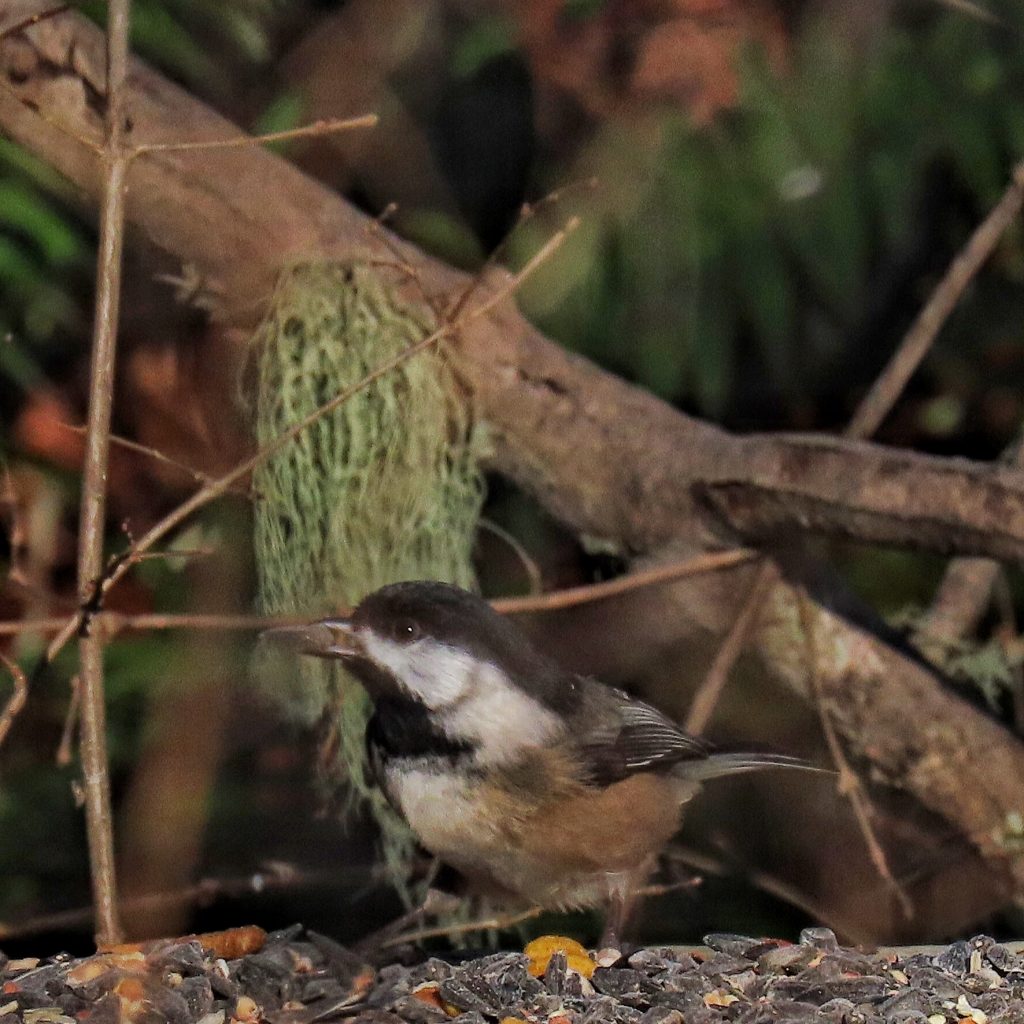
At feeders they usually dart in to grab a sunflower seed, and dash away to eat or hide it. And speaking of their caches, Black-capped Chickadees (as well as many other food storing birds) have evolved an interesting mechanism that helps them keep track of their stashes. Studies have shown that in the fall, by regulating certain hormones, Black-capped Chickadees can actually add brain cells to their hippocampus (the brain’s spatial memory bank), increasing its capacity by up to 30%! Then, in the spring when the outdated information is no longer needed, the hippocampus shrinks to normal size.
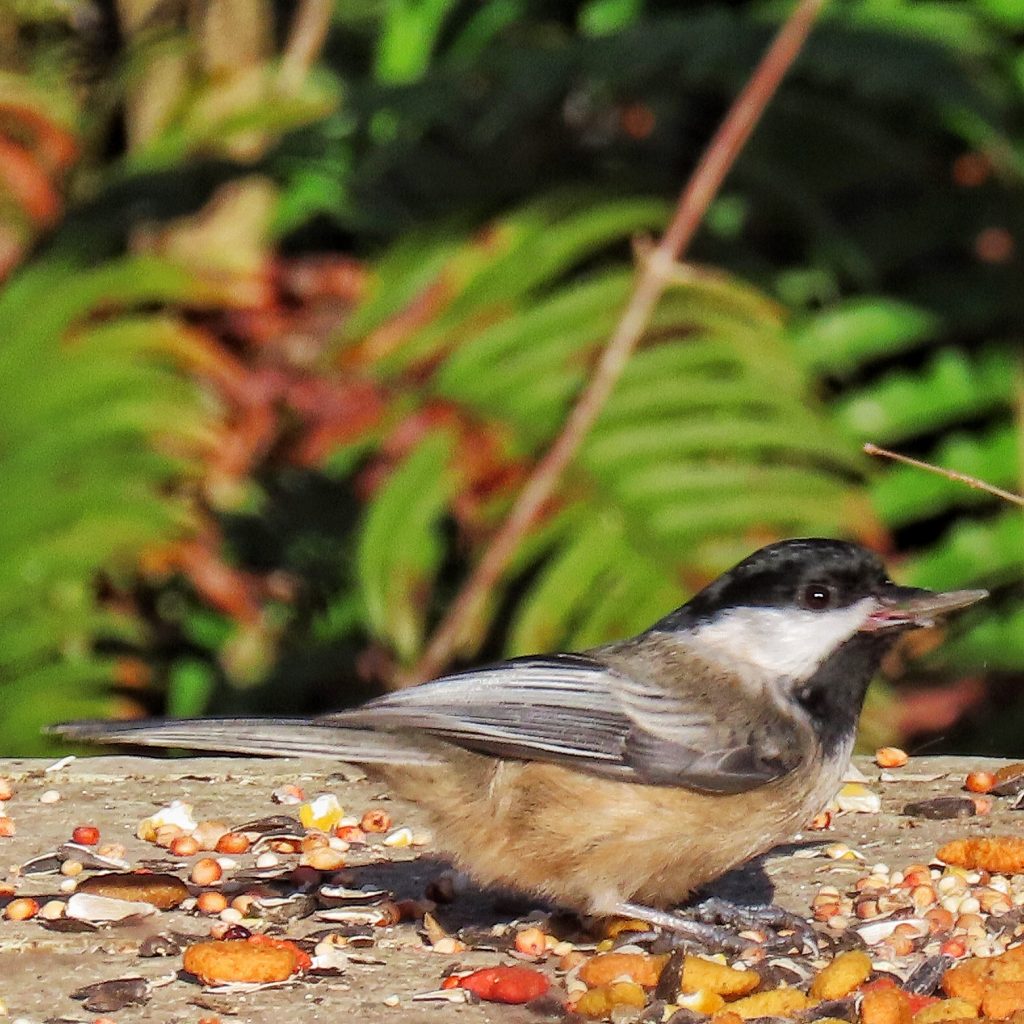
The two birds in these photos were unusually restrained in their behavior, at times seemingly content to perch on this plywood in the winter sunshine, behavior which rewarded this slow-on-the-trigger photographer with some of the best Black-capped Chickadee photos he has managed to take. I feel great gratitude toward these birds, my wife who pointed them out on an anomalous chunk of plywood, and the unknown kind soul who set up and stocked this little feeding station in the woods near Vancouver Lake.
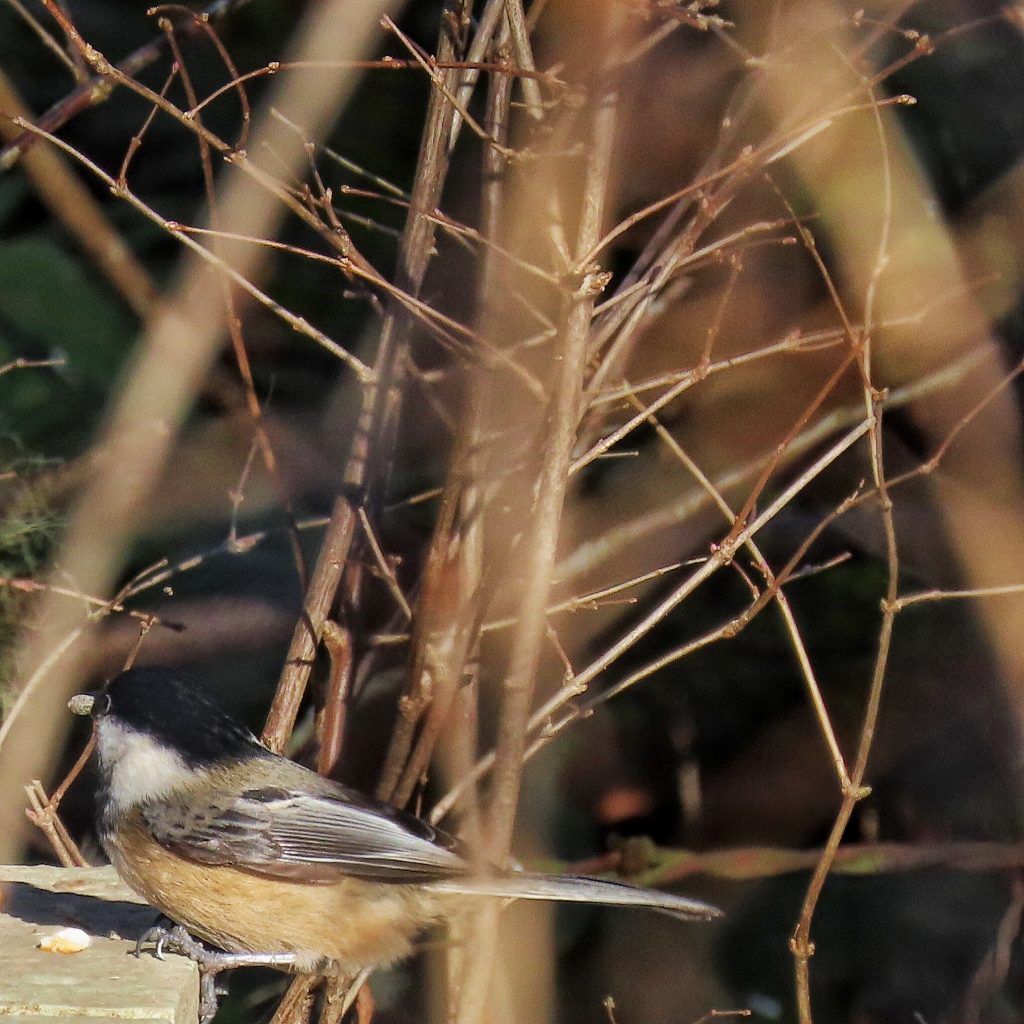
Description-Black cap and throat with white cheeks; the back and wings are grey; white to buffy breast and flanks.
Similar species– Chestnut-backed Chickadee has chestnut back, and sides, greyish brown breast, and often has brown tinged cap; Mountain Chickadees have a white stripe over the eye.
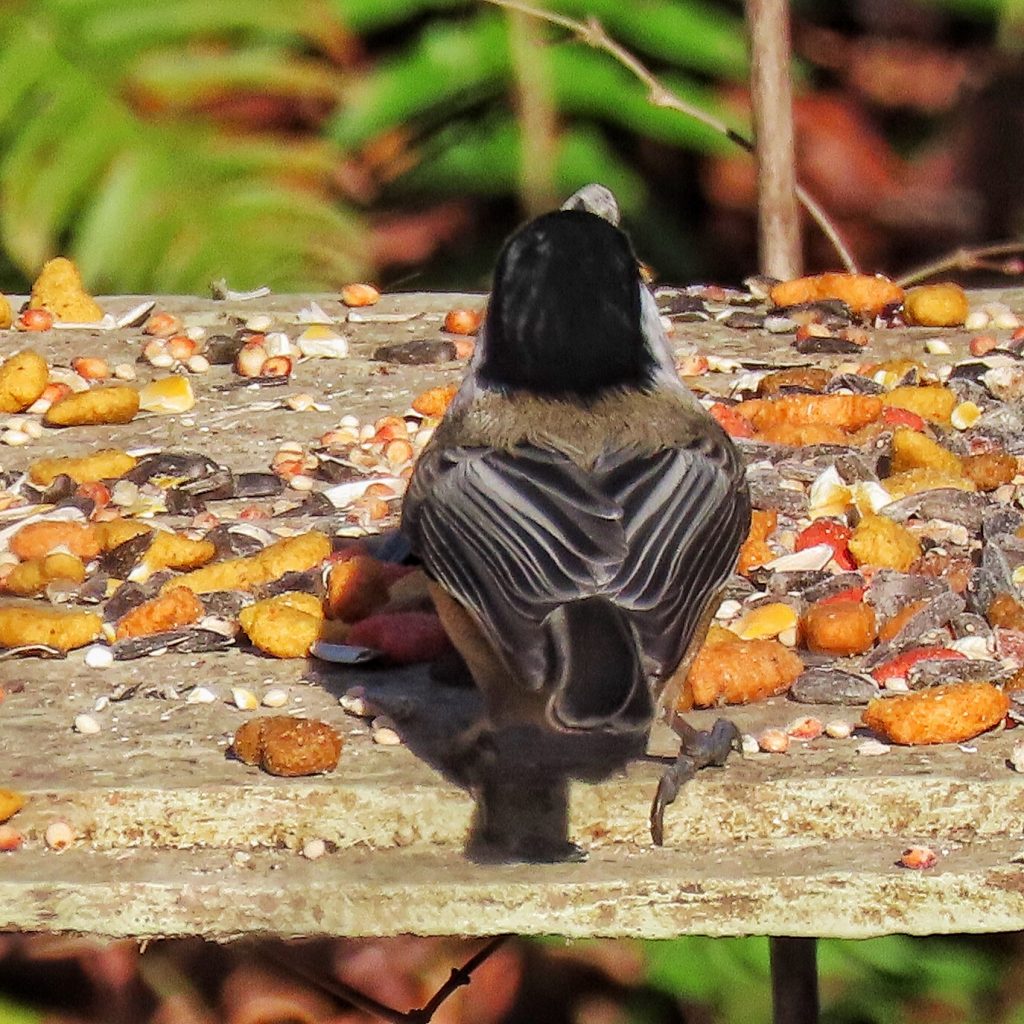
Habitat-May be found in almost any habitat, though most common amongst trees. They are a very common bird at feeders.
Range-Region wide
Eats-Omnivorous; seeds, nuts, fruit, arthropods and their eggs, suet, and even occasionally carrion, especially during the winter months.
Eaten by– Owls, especially Northern Pygmy Owls, Sharp-shinned and Coopers Hawks, and unbelled domestic and feral cats.
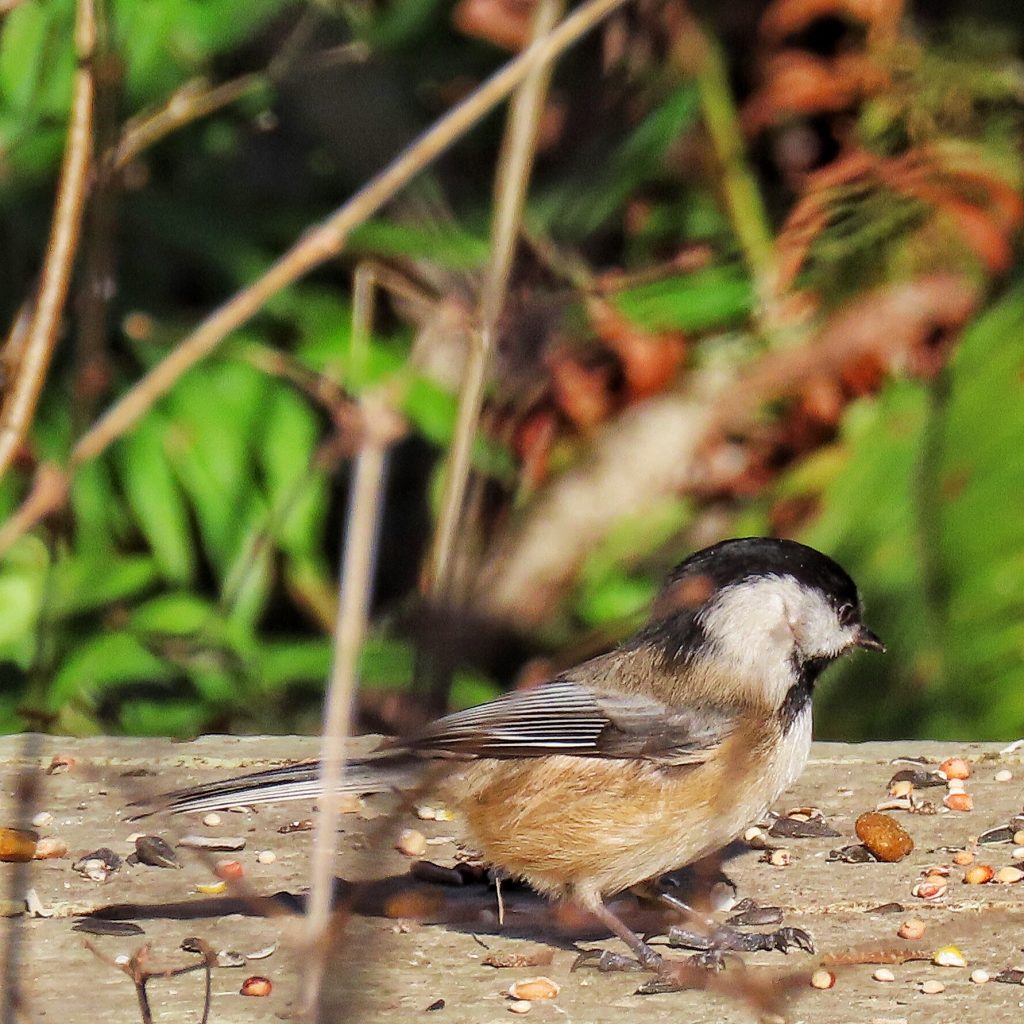
Etymology of names– Poecile comes from a Greek word meaning ‘many colored’. With a slight suffix change it also meant ‘a small bird’. The species epithet atricapillus means ‘black head hair’. Not much mystery as to what that references.
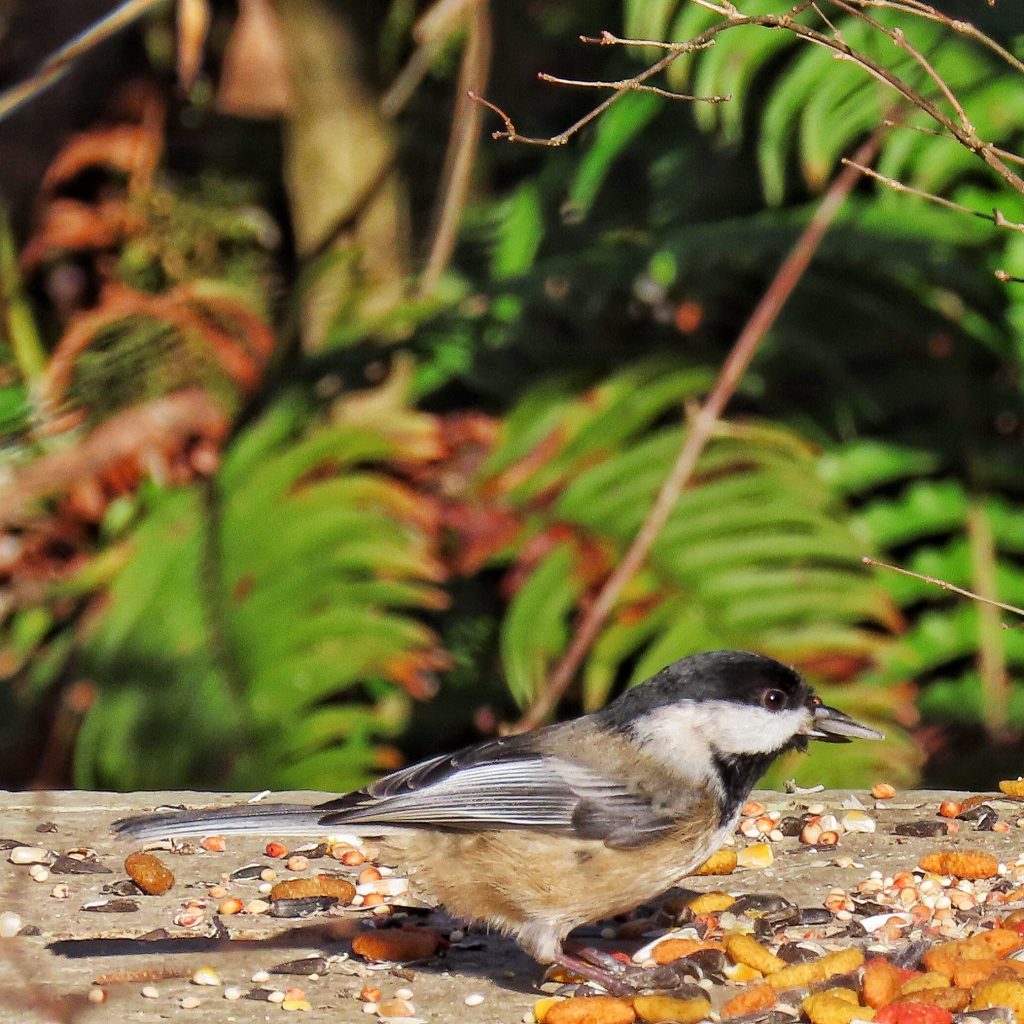
https://www.allaboutbirds.org/guide/Black-capped_Chickadee/overview
https://www.allaboutbirds.org/guide/Black-capped_Chickadee/id
https://www.audubon.org/field-guide/bird/black-capped-chickadee
https://ebird.org/mt/news/aging-chickadees-by-the-color-of-their-mouth-is-it-reliable
https://blog.lauraerickson.com/2020/03/chickadee-therapy.html?m=1
https://www.google.com/search?q=black%20capped%20chickadee
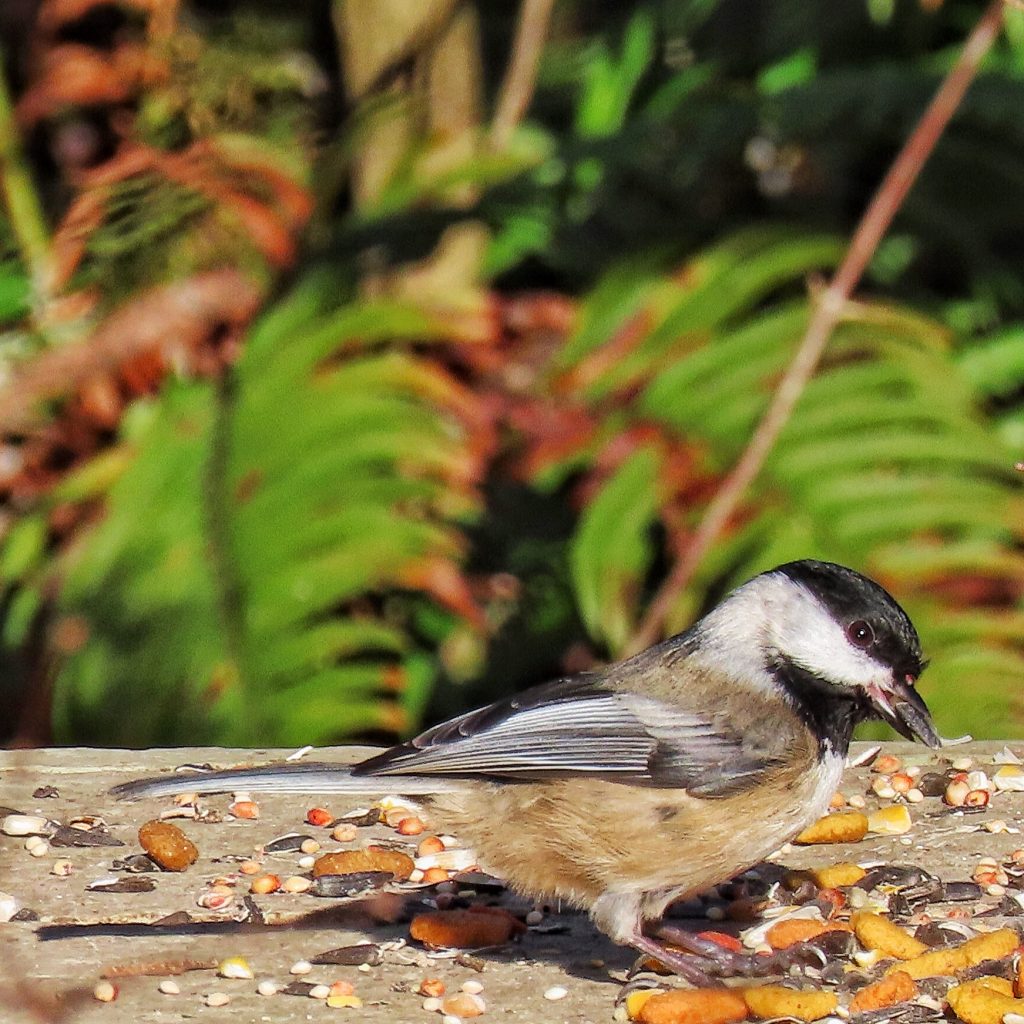
I love that you include links for further exploration:):) and your complete descriptions:)
Thank you!
Such adorable birds & thanks to you I see that they are rather brilliant! Thank you ☺️
Love the chickadees too! It’s interesting to me that here in Bend, Oregon there seems to be a sharp dividing line between the territories of the Black-Capped and the Mountain Chickadees. We sometimes work as park hosts, and when we are at Pilot Butte SP, which is in-town, we only had Black-Capped. Currently we are at Tumalo SP, on the edge of town but only about 6 miles from Pilot Butte (as the chickadee flies) and we have only Mountain Chickadees, even though we are at a slightly lower elevation here!
That’s very interesting! Are there habitat differences?
No not really – fewer homes and more trees out here at Tumalo, but the same kinds of trees and vegetation.
And the same phenomenon goes for the Jays – only California Scrub Jays at Pilot Butte in town, only Steller’s Jays here at Tumalo.
That’s very interesting, Allison! Thanks for the information!